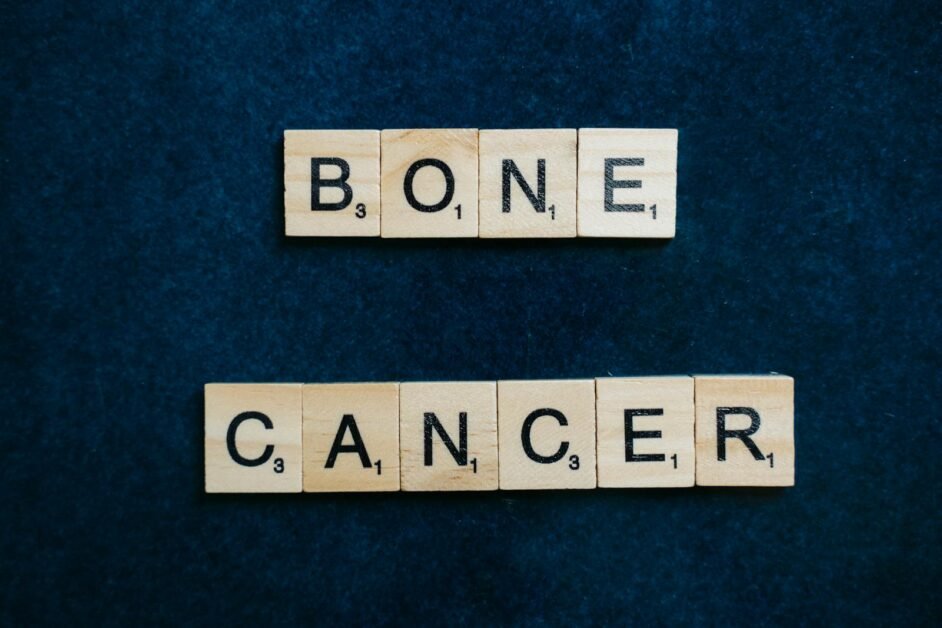Exploring Alternative Pain Relief For Bone Cancer
So you’ve been diagnosed with bone cancer and are experiencing excruciating pain. Traditional pain relief methods have provided some relief, but you’re looking for alternative pain relief for bone cancer options that could potentially alleviate your discomfort. In this article, we’ll explore various alternative pain relief methods specifically tailored for bone cancer patients. From acupuncture and meditation to herbal remedies and physical therapy, we’ll delve into these alternative approaches that have shown promise in helping individuals manage their pain and improve their quality of life. Whether you’re seeking additional relief or simply want to explore different options, this article is here to guide you through the world of alternative pain relief methods for bone cancer.

{Advertisement}
Discover the global conspiracy to snatch essential drugs from hard working patriots…and ship them to America’s greatest enemies. And what you must do now to survive a world without medications.
Risk factors for bone cancer
When it comes to bone cancer, understanding the risk factors is crucial. Certain factors can increase the likelihood of developing bone cancer, and being aware of these can help you take proactive measures towards prevention or early detection.
Some common risk factors for bone cancer include:
- Age: Bone cancer is most commonly diagnosed in children and young adults, although it can occur at any age.
- Genetics and family history: Certain inherited conditions, such as Li-Fraumeni syndrome and hereditary retinoblastoma, increase the risk of developing bone cancer. Additionally, having a family history of bone cancer can also contribute to an individual’s risk.
- Previous radiation therapy: Individuals who have undergone radiation therapy for other conditions, such as previous cancer treatments, may have a higher risk of developing bone cancer.
- Paget’s disease: This condition, characterized by abnormal bone tissue growth, increases the risk of bone cancer in affected individuals.
- Exposure to radiation and chemicals: Prolonged exposure to high levels of radiation or certain chemicals, such as arsenic, can increase the risk of bone cancer.
- Bone disorders: Certain bone disorders, such as osteosarcoma, Ewing’s sarcoma, and chondrosarcoma, can also increase the likelihood of developing bone cancer.
It’s important to note that having one or more of these risk factors doesn’t necessarily mean you will develop bone cancer. However, being aware of these factors and discussing them with your healthcare provider can help in early detection and appropriate management if necessary.
Traditional pain relief methods for bone cancer
The management of bone cancer pain is a critical aspect of the overall treatment plan. Traditional pain relief methods often play a significant role in providing comfort and improving quality of life for individuals with bone cancer.
Some commonly used traditional pain relief methods for bone cancer include:
- Nonsteroidal anti-inflammatory drugs (NSAIDs): These over-the-counter medications, such as ibuprofen and aspirin, can help in reducing pain and inflammation associated with bone cancer.
- Opioid medications: In more severe cases of bone cancer pain, opioid medications may be prescribed to provide stronger pain relief. These medications should be used under the supervision of a healthcare professional due to their potential for addiction and side effects.
- Physical therapy: Physical therapy can help in relieving pain and improving mobility by using exercises and techniques tailored to the specific needs of individuals with bone cancer. This can include stretching, strengthening exercises, and manual therapy techniques.
- Radiation therapy: In addition to its ability to target and destroy cancer cells, radiation therapy can also be effective in reducing bone cancer pain. By focusing radiation on the affected area, it can help alleviate pain symptoms and improve overall comfort.
- Surgical interventions: When bone cancer causes severe pain or complications, surgical interventions may be necessary. This can involve removing tumor masses, reconstructing damaged bones, or stabilizing fractures to reduce pain and improve function.
While these traditional methods can effectively manage bone cancer pain for many individuals, they may not be suitable or sufficient for everyone. In such cases, alternative pain relief methods can offer additional options to explore.
{Advertisement}
Here Is The Most Important Natural Solution That’s Probably Missing From Your Backyard
Challenges with traditional pain relief methods
While traditional pain relief methods can be effective, there are certain challenges associated with their use, particularly when it comes to long-term management of bone cancer pain.
- Side effects: Traditional pain medications, like opioids, can have side effects such as nausea, dizziness, constipation, and drowsiness. These side effects can significantly impact a person’s quality of life and may require additional medications for management.
- Tolerance and dependence: With prolonged use of opioid medications, tolerance can develop, requiring higher doses to achieve the same pain relief. Additionally, dependence and addiction potential are concerns with long-term opioid use.
- Risk of overdose: Opioids have a risk of overdose, especially when used improperly or in high doses. This can be a significant concern, particularly for individuals experiencing severe bone cancer pain who may be more prone to escalating their medication intake.
- Limited efficacy in some cases: Not all individuals with bone cancer pain experience complete relief with traditional pain relief methods alone. This can be due to variations in pain perception, differences in tumor location, or the presence of other underlying factors.
Recognizing these challenges and the potential limitations of traditional pain relief methods, individuals with bone cancer and their healthcare providers may consider exploring alternative approaches that can provide additional relief and support.
Types of alternative pain relief for bone cancer
Alternative pain relief for bone cancer methods encompass a wide range of approaches that can be used alongside or in place of traditional methods. These approaches often focus on holistic well-being, addressing not only the physical aspect of pain but also the emotional, mental, and spiritual aspects.
Some types of alternative pain relief methods for bone cancer pain include:
- Acupuncture: This ancient Chinese practice involves the insertion of thin needles into specific points on the body to stimulate energy flow and promote pain relief. Acupuncture has shown promising results in reducing bone cancer pain and enhancing overall well-being.
- massage therapy: Massage therapy can help relax muscles, improve circulation, and reduce pain and tension. Different techniques, such as Swedish massage, deep tissue massage, and lymphatic drainage massage, may be used depending on the individual’s needs and preferences.
- herbal remedies: Certain herbs, such as turmeric, ginger, and boswellia, have anti-inflammatory and analgesic properties that can provide relief from bone cancer pain. These herbs can be consumed in various forms, including teas, capsules, or topical preparations.
- mind-body practices: Techniques such as meditation, guided imagery, and mindfulness can help individuals manage bone cancer pain by promoting relaxation, reducing stress, and shifting focus away from pain sensations.
- Cannabis: Some individuals find relief from bone cancer pain by using medical cannabis, particularly those containing higher levels of CBD (cannabidiol) and lower levels of THC (tetrahydrocannabinol). CBD is known for its potential pain-relieving and anti-inflammatory properties.
- Physical therapy: Alongside traditional physical therapy, alternative approaches such as yoga, tai chi, or qigong can help improve flexibility, strength, and balance while providing pain relief and promoting overall well-being.
- Electrotherapy: Utilizing electrical currents, electrotherapy can stimulate nerves and muscles, promoting pain relief and easing muscle spasms. Methods such as transcutaneous electrical nerve stimulation (TENS) and pulsed radiofrequency therapy are commonly used for bone cancer pain management.
When considering alternative pain relief for bone cancer, it’s essential to consult with your healthcare team and discuss any potential interactions or contraindications with other treatments or medications you may be receiving.

Acupuncture alternative pain relief for bone cancer
Acupuncture is a traditional Chinese medicine practice that involves the insertion of thin needles into specific points on the body to stimulate energy flow and promote balance. It is widely recognized for its potential in reducing pain and enhancing overall well-being, including for individuals living with bone cancer.
The practice of acupuncture is based on the belief that the body has channels or meridians through which energy, known as Qi, flows. Any disruption or imbalance in the flow of Qi is believed to contribute to pain and illness. Acupuncture aims to restore the balance and harmony of Qi, thus alleviating pain and restoring well-being.
For individuals with bone cancer, acupuncture can provide pain relief by:
- Stimulating the release of endorphins: Acupuncture promotes the release of endorphins, which are natural pain-relieving chemicals produced by the body. These endorphins can help reduce pain sensations and promote a sense of well-being.
- Enhancing blood circulation: By targeting specific points on the body, acupuncture improves blood circulation to the affected areas. This increased blood flow can promote healing, reduce inflammation, and alleviate pain.
- Reducing inflammation: Inflammation is a common factor in bone cancer pain. Acupuncture has been shown to have anti-inflammatory effects, helping to reduce swelling and inflammation in the affected bones.
- Balancing energy flow: Acupuncture aims to restore the balance and flow of Qi throughout the body. By addressing any energy imbalances, acupuncture can help alleviate pain and improve overall well-being.
It’s important to note that acupuncture is a complementary therapy and should be used alongside conventional medical treatments for bone cancer. Always consult with your healthcare team before starting acupuncture or any other alternative pain relief method.
Massage therapy for bone cancer pain relief
Massage therapy is a popular alternative pain relief method that involves manipulating the soft tissues of the body to relieve pain, tension, and stress. It can be a beneficial addition to the overall management of bone cancer pain, offering both physical and emotional relief.
When it comes to bone cancer pain, massage therapy can provide several benefits, including:
- Pain reduction: Massage therapy helps relax muscles and reduce muscle tension, making it effective in alleviating pain associated with bone cancer. The pressure applied during the massage stimulates blood flow to the affected area, promoting healing.
- Improved relaxation and sleep: The soothing and calming nature of massage therapy can help individuals with bone cancer relax, reducing stress and anxiety. This can contribute to improved sleep patterns and overall well-being.
- Enhanced emotional well-being: Living with bone cancer can take a toll on a person’s mental and emotional health. Massage therapy provides a safe and nurturing environment, allowing individuals to relax, release emotional tension, and experience a sense of comfort and support.
- Increased range of motion: When bone cancer affects mobility and causes stiffness in joints, massage therapy can help improve flexibility and range of motion. By loosening tight muscles and reducing tension, it can promote easier movement and functionality.
It’s important to seek the services of a qualified massage therapist with experience in working with individuals with bone cancer. They will have the necessary knowledge and expertise to adapt the massage techniques to suit your specific needs and ensure your safety and comfort.

Herbal remedies for bone cancer pain relief
Herbal remedies have long been used for their potential pain-relieving properties and can be a valuable addition to the management of bone cancer pain. However, it’s essential to approach herbal remedies with caution and consult with your healthcare provider before use.
Some commonly used herbal remedies for bone cancer pain relief include:
- Turmeric: Turmeric contains a compound called curcumin, which has strong anti-inflammatory properties. It can help in reducing pain and inflammation associated with bone cancer. Turmeric can be consumed as a spice in your food or taken in supplement form.
- Ginger: Ginger is another herb known for its anti-inflammatory and pain-relieving properties. It can be consumed in various forms, such as ginger tea, capsules, or added to meals.
- Boswellia: Boswellia, also known as Indian frankincense, has long been used in traditional medicine for its potential analgesic properties. It can help in reducing pain and inflammation associated with bone cancer. Boswellia is available as a supplement or in topical forms such as creams or gels.
- Devil’s claw: Devil’s claw is a plant native to Southern Africa that has been traditionally used for pain relief. It has anti-inflammatory properties and can help in reducing bone cancer pain. Devil’s claw is available in capsule or tea form.
It’s important to remember that herbal remedies may interact with other medications you may be taking or could have an impact on your overall health, so it’s crucial to consult with your healthcare provider before incorporating any herbs into your bone cancer pain management plan.
Mind-body practices for bone cancer pain relief
Mind-body practices encompass a broad range of techniques and approaches that involve the connection between the mind, body, and spirit. These practices can be used as complementary therapies alongside conventional pain relief methods to help individuals with bone cancer find relief and support.
Some commonly used mind-body practices for bone cancer pain relief include:
- Meditation: Meditation involves focusing your attention and eliminating the stream of thoughts running through your mind. It can promote deep relaxation, reduce stress, and improve overall well-being. Meditation can be practiced alone or with the guidance of a meditation instructor or through meditation apps.
- Guided imagery: Guided imagery involves using the power of visualization to create positive mental images. By imagining peaceful and healing scenes, individuals can distract themselves from pain and promote relaxation.
- Mindfulness: Mindfulness involves paying attention to the present moment without judgment. Practicing mindfulness can help individuals with bone cancer become more aware of their bodies, thoughts, and emotions, promoting a sense of calmness and acceptance.
- Yoga: Yoga combines physical postures, breathing techniques, and meditation to promote physical and mental well-being. It can help alleviate bone cancer pain by improving flexibility, strength, and balance while reducing stress and promoting relaxation.
- Tai chi and qigong: These gentle, flowing movements promote relaxation, balance, and vitality. Tai chi and qigong can help in reducing bone cancer pain by enhancing physical function, reducing stress, and improving overall well-being.
Mind-body practices can be tailored to suit an individual’s abilities, preferences, and overall health. When considering these approaches, it’s essential to work with qualified instructors or practitioners who have experience working with individuals with bone cancer.

Cannabis for bone cancer pain relief
Cannabis, also known as marijuana, has gained attention for its potential pain-relieving properties, particularly for individuals living with chronic pain conditions such as bone cancer. However, it’s important to approach cannabis use with caution and under the guidance of a healthcare provider.
Cannabis contains two main active compounds: THC (tetrahydrocannabinol) and CBD (cannabidiol). THC is responsible for the psychoactive effects of cannabis, while CBD is believed to have potential analgesic and anti-inflammatory properties without the intoxicating effects.
For bone cancer pain relief, medical cannabis high in CBD and low in THC may be recommended. Potential benefits of using medical cannabis for bone cancer pain relief include:
- Pain relief: CBD has shown potential in reducing pain intensity and improving overall pain management in individuals with various chronic pain conditions, including bone cancer.
- Anti-inflammatory effects: CBD has been found to have anti-inflammatory properties, which can help in reducing inflammation, edema, and associated pain in bone cancer.
- Improved sleep: Many individuals with bone cancer experience sleep disturbances due to pain. CBD may help improve sleep patterns and quality, leading to better overall well-being.
- Reduced nausea and vomiting: In addition to its potential pain-relieving properties, CBD can also help alleviate treatment-related side effects such as nausea and vomiting.
It’s important to consult with your healthcare provider before considering medical cannabis as a pain relief option for bone cancer. They can provide guidance on appropriate dosages, potential interactions with other medications, and legal considerations based on your specific location.
Physical therapy for bone cancer pain relief
Physical therapy plays a crucial role in the overall management of bone cancer pain by helping improve mobility, reduce pain, and enhance overall function and quality of life. A physical therapist with experience in working with individuals with bone cancer can create a tailored program to address your specific needs and goals.
Some ways physical therapy can provide pain relief for bone cancer include:
- Stretching exercises: Stretching exercises can help improve flexibility, increase range of motion, and reduce muscle tension and pain. Your physical therapist can guide you in performing safe and effective stretches that target the affected areas.
- Strengthening exercises: Strengthening exercises help build muscle strength and support the affected bones. By improving muscle strength, individuals with bone cancer can experience reduced pain and better stability.
- Manual therapy techniques: Physical therapists skilled in manual therapy can use techniques such as joint mobilizations, soft tissue mobilizations, and myofascial release to reduce pain and improve movement in the affected areas.
- Education and training: Physical therapists can provide education on posture, body mechanics, and movement techniques to minimize pain and optimize function during daily activities. They can also provide training on assistive devices, such as walkers or crutches, if needed.
- Pain management strategies: Physical therapists can teach individuals with bone cancer various pain management strategies, such as breathing exercises, relaxation techniques, and heat and cold therapy, to help alleviate pain and enhance overall well-being.
Working closely with a physical therapist can empower individuals with bone cancer to actively participate in their pain management and regain control over their lives. Physical therapy is often recommended alongside other treatments and modalities to provide comprehensive pain relief and support.
Electrotherapy for bone cancer pain relief
Electrotherapy is a pain relief approach that uses electrical currents to stimulate nerves and muscles, promoting pain relief and reducing muscle spasms. It can be an effective alternative or complementary therapy for individuals with bone cancer pain, working alongside other traditional or alternative pain relief methods.
Some commonly used forms of electrotherapy for bone cancer pain relief include:
- Transcutaneous electrical nerve stimulation (TENS): TENS involves the application of low-voltage electrical currents to the skin using electrodes. These electrical currents can help reduce pain signals and muscle tension, providing temporary pain relief.
- Pulsed radiofrequency therapy: Pulsed radiofrequency therapy uses radiofrequency energy to deliver electrical currents to specific nerves associated with bone cancer pain. It can provide longer-lasting pain relief by creating a localized heat effect that disrupts pain signals.
Electrotherapy is generally considered safe when used appropriately, but it’s important to consult with a healthcare professional experienced in electrotherapy to determine if it’s suitable for you. They can guide you on the proper usage of electrotherapy devices and ensure your safety and comfort during treatment.
Radiation therapy for bone cancer pain relief
Radiation therapy is a standard treatment approach for bone cancer, but it can also be used specifically to target and alleviate bone cancer pain. By directing high-energy beams to the affected area, radiation therapy can help reduce pain and improve overall comfort.
Radiation therapy for bone cancer pain relief works by:
- Shrinking tumors: Radiation therapy can target bone tumors and shrink them, relieving pressure and reducing pain. This can significantly improve an individual’s quality of life and overall well-being.
- Destroying cancer cells: In addition to pain relief, radiation therapy destroys cancer cells present in the affected bone, helping to slow down the progression of the disease and prevent further damage.
- Relieving symptoms: Radiation therapy can alleviate bone cancer symptoms such as swelling, bone fractures, and inflammation, leading to pain reduction and improved function.
Before undergoing radiation therapy for bone cancer pain relief, a comprehensive evaluation by a radiation oncologist is necessary to determine the appropriateness and potential benefits of this treatment approach. They will consider factors such as the location and extent of the bone cancer, previous treatments received, and individual-specific factors.
It’s essential to discuss radiation therapy as a potential pain relief option with your healthcare provider to ensure all treatment options are considered and to explore the potential benefits and risks of this approach in managing bone cancer pain.
Heat therapy for bone cancer pain relief
Heat therapy is a widely used alternative pain relief method that involves the application of heat to the affected area to relieve pain and muscle tension. It can be particularly beneficial for individuals with bone cancer pain, promoting relaxation, improving blood circulation, and reducing discomfort.
Some commonly used forms of heat therapy for bone cancer pain relief include:
- Hot packs or warm compresses: Hot packs or warm compresses can be applied directly to the affected area to provide localized heat and pain relief. This can help relax muscles, improve blood flow, and reduce pain sensations.
- Warm baths or showers: Soaking in warm water, either in a bathtub or through a warm shower, can provide all-over heat therapy for bone cancer pain. Warm water helps relax muscles and may offer temporary pain relief.
- Heat wraps or patches: Heat wraps or patches can be applied to the skin and provide a continuous supply of heat to the affected area. These products are convenient and can be used throughout the day for ongoing pain relief.
It’s important to be cautious when using heat therapy and avoid applying excessive heat that can cause burns or skin damage. Always follow the instructions provided with heat therapy products and seek guidance from your healthcare provider if you have any concerns or questions.
Supportive care for bone cancer pain relief
In addition to medical treatments and alternative pain relief methods, supportive care is an essential component of pain management for individuals with bone cancer. Supportive care focuses on addressing the physical, emotional, and practical challenges associated with bone cancer, providing holistic support and comfort.
Some key aspects of supportive care for bone cancer pain relief include:
- Palliative care: Palliative care involves a multidisciplinary approach that focuses on improving the quality of life for individuals with advanced or terminal diseases. It aims to alleviate pain and other symptoms, manage emotional and psychological challenges, and address spiritual and practical needs.
- Emotional and psychological support: Living with bone cancer can have a significant impact on mental and emotional well-being. Supportive care can provide counseling services, support groups, and therapy to help individuals navigate the emotional challenges associated with bone cancer and manage anxiety, depression, or fear.
- Symptom management: Supportive care specialists can assist in managing various symptoms associated with bone cancer, such as nausea, fatigue, sleep disturbances, and loss of appetite. They can provide strategies and medications to alleviate these symptoms and improve overall comfort.
- Care coordination: Supportive care teams can help coordinate care between different healthcare providers, ensuring seamless communication and collaboration throughout the treatment process. This coordination helps in optimizing pain management and addressing any potential gaps in care.
- Spiritual care: Individuals with bone cancer may find solace and strength through spiritual practices and beliefs. Supportive care can provide access to spiritual care providers or chaplains who can offer guidance, comfort, and spiritual support.
Supportive care is a personalized and ongoing process that adapts to the changing needs and goals of individuals with bone cancer. It should be integrated into the overall pain management plan to complement medical treatments and alternative pain relief methods effectively.
Medical marijuana for bone cancer pain relief
Medical marijuana, or medical cannabis, has gained recognition for its potential in managing pain associated with various conditions, including bone cancer. Medical marijuana contains cannabinoids, such as THC and CBD, which can provide pain relief and offer additional benefits for individuals living with bone cancer.
For bone cancer pain relief, medical marijuana may help by:
- Alleviating pain: Both THC and CBD have potential analgesic properties. THC interacts with cannabinoid receptors in the brain and spinal cord to reduce pain signals, while CBD may have anti-inflammatory effects that can help in reducing bone cancer pain.
- Reducing inflammation and swelling: In addition to its potential pain-relieving properties, CBD has shown promise in reducing inflammation and edema, which can contribute to bone cancer pain. By addressing inflammation, medical marijuana may provide relief from pain and discomfort.
- Improving sleep and relaxation: Many individuals with bone cancer experience sleep disturbances due to pain. Medical marijuana may help improve sleep quality and promote relaxation, leading to enhanced overall well-being.
It’s important to note that the use of medical marijuana should always be discussed with a healthcare provider experienced in this field. They can provide guidance on appropriate dosages, potential interactions with other medications, and any legal considerations based on your specific location.
Physical manipulation for bone cancer pain relief
Physical manipulation techniques can be effective in providing bone cancer pain relief by addressing muscle tension, improving circulation, and enhancing overall well-being. These techniques aim to reduce pain and improve functionality through hands-on approaches.
Some commonly used physical manipulation techniques for bone cancer pain relief include:
- Chiropractic care: Chiropractors use spinal adjustments and manual manipulations to realign the spine, relieve pressure on nerves, and promote pain relief. This can help alleviate pain associated with bone cancer and improve overall function and well-being.
- Osteopathic manipulation: Osteopathic physicians use manual techniques, such as stretching, gentle pressure, and resistance, to restore balance, improve mobility, and reduce pain. This approach can provide bone cancer pain relief and enhance overall physical function.
- Manual therapy: Physical therapists skilled in manual therapy techniques can use various hands-on techniques to alleviate bone cancer pain. These may include joint mobilizations, soft tissue mobilizations, myofascial release, and trigger point therapy.
It’s important to work with qualified and experienced practitioners when considering physical manipulation for bone cancer pain relief. They can assess your specific needs, tailor the techniques to suit your condition, and ensure your safety and comfort during treatment.
Supplements and vitamins for bone cancer pain relief
While supplements and vitamins cannot cure bone cancer or replace medical treatments, some may help support overall well-being and potentially provide pain relief as part of a comprehensive pain management plan. It’s important to discuss the use of supplements and vitamins with your healthcare provider to determine their appropriateness and potential benefits.
Some commonly used supplements and vitamins for bone cancer pain relief include:
- Omega-3 fatty acids: Omega-3 fatty acids, found in fish oil supplements, have anti-inflammatory properties that may help reduce bone cancer pain. They can also provide other health benefits, such as promoting heart health.
- Vitamin D: Adequate levels of vitamin D are essential for bone health. Supplementing with vitamin D may help support bone strength and reduce bone cancer pain, especially in individuals with deficiencies.
- Vitamin B12: Vitamin B12 plays a crucial role in nerve function and red blood cell production. Adequate levels of vitamin B12 may help in reducing nerve-related pain associated with bone cancer.
Remember that supplements and vitamins should be used as complementary to your overall treatment plan and should not replace medical interventions. Always consult with your healthcare provider before starting any new supplements or vitamins to ensure their safety and compatibility with your condition.
Deep breathing exercises for bone cancer pain relief
Deep breathing exercises are a simple and accessible pain relief approach that can be easily incorporated into daily life. These exercises help promote relaxation, reduce stress, and modulate pain sensations, making them beneficial for individuals with bone cancer pain.
Some deep breathing exercises for bone cancer pain relief include:
- Diaphragmatic breathing: Diaphragmatic breathing involves taking slow, deep breaths, focusing on expanding the diaphragm and filling the lungs completely. This technique promotes relaxation and helps reduce stress and tension.
- Equal breathing: In equal breathing, inhale and exhale for an equal count, such as inhaling for a count of four and exhaling for a count of four. This technique helps create a balanced and calming breath pattern.
- Box breathing: Box breathing involves inhaling, holding the breath, exhaling, and holding the breath again, all for an equal count. This technique can help calm the nervous system, reduce stress, and promote pain relief.
- Guided breathing exercises: Guided breathing exercises can be found in various forms, such as meditation apps, audio recordings, or guided imagery sessions. These provide verbal cues and instructions to help individuals focus on their breath and achieve a state of deep relaxation.
Deep breathing exercises can be practiced at any time and in any place, making them a versatile pain relief tool for individuals with bone cancer. They can be used alongside other pain relief methods or on their own to promote relaxation and overall well-being.
In conclusion, alternative pain relief methods for bone cancer offer a diverse range of approaches that can complement traditional methods and provide additional relief and support. From acupuncture and massage therapy to herbal remedies and mind-body practices, these methods address pain from different angles and encompass holistic well-being.
While each individual’s experience with bone cancer pain may differ, exploring alternative pain relief methods can empower individuals to take an active role in their pain management and enhance their overall quality of life. It’s crucial to consult with healthcare professionals experienced in these approaches to ensure safe and effective use alongside conventional treatments. By considering the various options and tailoring a comprehensive pain management plan, individuals with bone cancer can find relief and support on their healing journey.
{Advertisement}
Here’s Why You Should Put Garlic in Your Ear Before Going to Sleep







